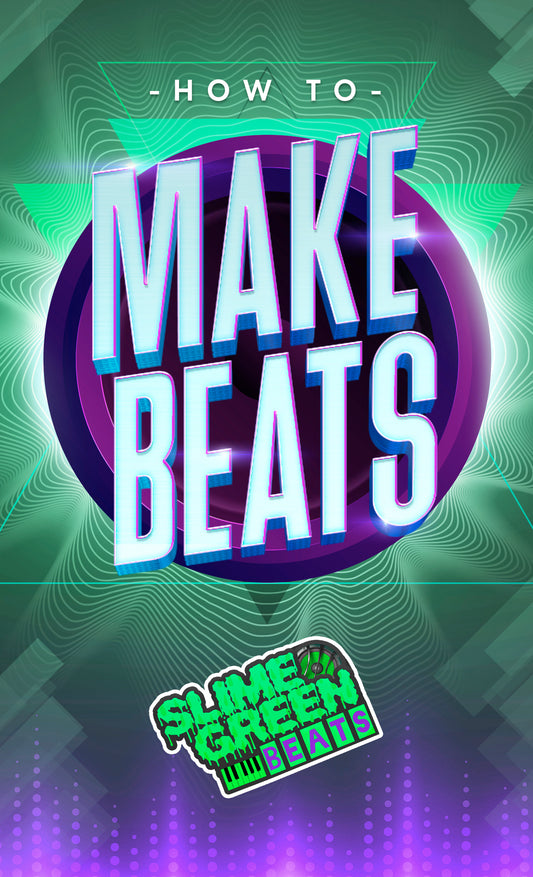Creating those deep, thumping 808 bass sounds in FL Studio might seem tricky at first, but once you get the hang of it, it's a game-changer for your music. Whether you're just starting out or looking to refine your skills, understanding how to craft and manipulate 808s can make your tracks stand out. In this guide, we'll walk you through the essentials of working with 808 bass, from selecting the right samples to mixing and arranging them for maximum impact.
Key Takeaways
- 808 bass sounds are crucial for modern music, especially in genres like hip-hop and EDM.
- Choosing the right sample or creating one from scratch is the first step to a great 808 sound.
- FL Studio offers built-in tools that make tuning and pitching your 808s straightforward.
- Layering techniques and effects like distortion can add depth and character to your 808s.
- Proper mixing ensures your 808s don't clash with other elements, giving your track clarity and punch.
Understanding the Basics of 808 Bass in FL Studio

What is an 808 Bass?
The term "808 bass" comes from the Roland TR-808 drum machine, which debuted in the 1980s. Originally, it wasn't just about bass; the 808 was a full drum machine. But over time, its deep, resonant bass drum sound became iconic. Today, when people talk about 808s, they're usually referring to that booming bass sound. It's the kind of bass that you feel in your chest, not just hear with your ears.
History and Evolution of 808 Sounds
The 808 sound has come a long way since its inception. Initially, it was used in hip-hop tracks in the '80s, thanks to its affordability and unique sound. As technology advanced, producers began to experiment with the 808, pushing its boundaries. By the 2000s, the 808 had found its place in a variety of genres, from pop to trap. Its versatility and the emotional weight it carries have made it a staple in modern music production.
Why Use 808 Bass in Modern Music
808 bass is not just about the low-end thump; it adds a unique texture and depth to music. Here are some reasons why it's a favorite among producers:
- Emotional Impact: The 808 bass can evoke strong feelings, whether it's the aggressive punch in a trap track or the smooth undercurrent in an R&B song.
- Versatility: It fits seamlessly into various genres, making it a go-to for many producers.
- Presence: An 808 can fill up the sonic space in a track, providing a solid foundation that other elements can build upon.
The 808 bass isn't just a sound; it's an experience. Its ability to transform a track and engage listeners on a physical level is unmatched. Whether you're crafting a hard-hitting beat or a mellow tune, the 808 bass can be your secret weapon.
Choosing the Right 808 Samples for Your Track
Sample Selection Tips
Picking the right 808 sample is like finding the perfect puzzle piece for your track. It can make or break the vibe you're aiming for. Here’s a quick rundown on how to get it right:
- Know Your Track's Key: Make sure your 808 fits the key of your track. It helps in maintaining harmony and avoiding any weird clashes.
- Listen to the Vibe: Check out tracks that capture the sound you want. Are you looking for something punchy or smooth?
- Frequency Matters: Keep an eye on the frequency range. Your 808 should sit well with other elements without getting lost or overpowering them.
Using Synthesizers to Create 808s
If you’re more of a DIY person, crafting your own 808s with a synthesizer can be a fun challenge. Start by selecting a sine or triangle wave as your base. These waveforms are great for creating that deep, clean bass sound. Once you have your base, tweak the pitch and envelope settings to shape your sound. This method allows for a lot of creativity and customization.
Exploring Popular 808 Sample Packs
Sometimes, it’s just easier to use ready-made samples. There are countless 808 sample packs out there, each offering a variety of sounds. Some popular ones include "808 Drums by Wave Alchemy" and "Ultra 808s". These packs are a great way to quickly find the perfect sound without spending hours tweaking a synth. Just drag and drop into your DAW and you’re good to go.
Remember, the right 808 can add that extra punch to your track, making it stand out in the mix. So take your time and choose wisely.
Crafting Your 808 Sound: Step-by-Step in FL Studio

Setting Up Your DAW for 808 Production
Alright, so you’ve got FL Studio open. First things first, let's get your workspace ready for some serious 808 crafting. Organizing your DAW properly can save you loads of time. Start by setting up a new project file. Make sure to name your channels and group your samples and instruments logically. This way, you won’t get lost when you’re knee-deep in production.
Using FL Studio's Built-in Tools
FL Studio comes packed with tools that make working with 808s a breeze. Head to the Channel Rack and load up the sampler. Drag your favorite 808 sample into it. Need to tweak it? FL Studio’s Edison is your best friend. Double-click on the sample, and open it in Edison to chop, edit, or loop it to your liking. You can even use the "Detect Pitch Regions" feature to make sure your 808 is tuned perfectly.
Tuning and Pitching Your 808s
Tuning is crucial. An 808 out of tune can ruin your track’s vibe. In FL Studio, double-click your sample, and under the "Envelope" settings, find the pitch knob. You can adjust the pitch by semitones or fine-tune it by cents. If you’re unsure about the key, use the "Pitch Detection" feature in Edison. Remember, the right tuning makes your 808s sit nicely in the mix.
Crafting 808s in FL Studio isn’t just about technical skills; it's about feeling the music and letting your creativity flow. Experiment with different settings until you find the sound that resonates with your track.
For more detailed steps on setting up your 808s, check out this guide to beat making on FL Studio, which dives into selecting the right drum kits and sounds for your track's vibe.
Advanced Techniques for Enhancing 808 Bass
Layering and Octave Techniques
Layering your 808 bass can add depth and character to your tracks. Start by duplicating your 808 track and pitch the duplicate an octave higher. This adds a new dimension to your sound. Make sure to use a high-pass filter on the higher octave to remove any low frequencies that might clash with the original 808. This technique can give your bass a fuller sound without muddying the mix.
Applying Effects and Distortion
Adding distortion to your 808s can make them more audible on smaller speakers. Consider using plugins like White Boost or AIR Distortion to introduce harmonic richness. Adjust the "Drive" or "Saturation" controls to find the sweet spot where your 808s cut through the mix without losing their character. Distortion can also add warmth, making your 808s more versatile.
Multiband Compression for 808s
Multiband compression allows you to control different frequency ranges of your 808s separately. This technique helps you balance the low, mid, and high frequencies, ensuring that your 808s sound cohesive with the rest of your track. By compressing specific bands, you can make sure your 808s have the right presence and energy, gluing them to the kick drum and other elements in the mix.
When working with 808s, remember that subtle changes can make a big difference. Experiment with these techniques to find what works best for your track and style.
Mixing and Arranging 808s for Maximum Impact
Balancing 808s with Other Elements
Getting your 808s to sit right in the mix is a bit like cooking: you need to balance the flavors. Start by cutting unnecessary low frequencies from other instruments. This clears the way for your 808 to shine. Use EQ to carve out space, so the 808 and kick aren't fighting for the same spot. If your kick isn't punching through, try a bit of subtractive EQ to give it room. And don't forget to keep an ear out for any harsh frequencies in the 808 itself—sometimes a little cut can make a big difference.
Creating Space in the Mix
Space is key. You don't want your 808s to get lost or muddy. Here’s a trick: use short 808s to leave room in the track, or long ones to fill it up, but be careful with overlap. If you're using Auto Shift, its real-time pitch correction can help keep things clean. Also, think about where your 808s hit—align them with your kick drum to reinforce the rhythm. This way, you’re not just making noise; you're creating a groove.
Arranging 808 Patterns for Clarity
Arrangement can make or break your track. Space your 808s strategically—keep them sparse in verses, and let them shine in the chorus. This contrast makes your track more dynamic. If the 808s are too overpowering, try playing them an octave higher or change up the rhythm. Sometimes, less is more. And always remember, your 808s should complement the drums, not compete with them.
Troubleshooting Common 808 Issues
Avoiding Frequency Clashes
Getting your 808s to sit nicely in the mix can be tricky. The key is to ensure they don't clash with other elements, especially the kick drum. Here are a few tips:
- EQ Wisely: Use a high-pass filter on other instruments to cut out low frequencies that might interfere with your 808s. This clears up space in the mix.
- Layer Thoughtfully: If your kick and 808 are fighting for space, consider pitching your 808 a fifth above the root note. This separation can help both elements shine.
- Mind the Arrangement: Make sure your 808s are not playing at the same time as other bass-heavy elements to avoid muddiness.
Ensuring 808s Translate on All Systems
It's frustrating when your 808s sound great in the studio but fall flat on other systems. Here's how to make sure they translate well:
- Check on Multiple Devices: Always listen to your mix on various speakers and headphones. This helps you identify any inconsistencies.
- Use Reference Tracks: Compare your track to professionally mixed songs to ensure your 808s are balanced and prominent.
- Layer Upper Harmonics: If your 808s are getting lost on smaller speakers, try layering an octave higher to add presence without boosting the low end.
Fixing Phase and Timing Problems
Phase issues can weaken your 808s, making them sound thin or out of sync. Here's how to tackle these problems:
- Phase Alignment: Use a phase alignment tool to ensure your 808s and kicks are working together, not against each other.
- Timing Adjustments: Make sure your 808s hit at the right moment. Even a slight delay can cause phase issues.
- Visualize the Waveform: Look at the waveform of your 808s to spot any phase discrepancies. Adjust as needed to ensure a full, punchy sound.
Remember, the goal is not just to make your 808s sound good in isolation but to ensure they complement the rest of your track. A well-balanced mix is key to achieving that iconic 808 punch.
Saving and Reusing Your Custom 808 Presets
Creating your own 808 sound is just the beginning; knowing how to save and reuse these custom presets is what truly maximizes your workflow. Presets save you time and ensure consistency across your projects. Here's how you can efficiently manage your 808 presets in FL Studio.
Creating Presets in FL Studio
- Design Your 808 Sound: Start by crafting the perfect 808 using your favorite synth or sampler. Adjust the ADSR envelope, tweak the pitch, and apply any effects you see fit.
- Save as Preset: Once you're satisfied with the sound, save it as a preset. In FL Studio, this is usually done by right-clicking the channel, selecting 'Save Preset As,' and choosing a location in your browser.
- Naming and Organizing: Give your preset a descriptive name that indicates its characteristics or intended use. This will make it easier to find later.
Organizing Your 808 Library
- Create Folders: Organize your presets into folders based on type or project. For example, you might have folders for "Trap 808s," "Smooth 808s," or "Experimental 808s."
- Use Tags: Consider using tags for quick access. Tags like "punchy," "deep," or "distorted" can help you quickly find the right sound.
- Regular Clean-Up: Periodically go through your library and remove any presets you no longer use. This keeps things tidy and helps you focus on the sounds that truly matter.
Tips for Consistent Sound Across Projects
- Standardize Your Effects Chain: Use a consistent chain of effects (like EQ, compression, and distortion) on your 808s to maintain a similar tone across different tracks.
- Reference Your Mixes: Regularly compare your 808 sounds with previous tracks to ensure consistency. This can be especially important if you're working on an album or EP.
- Backup Your Presets: Always keep a backup of your preset library. You never know when a system crash might occur, and losing your hard work can be devastating.
By efficiently managing your 808 presets, you not only save time but also maintain a consistent sound that can define your musical style. With these practices, you'll be ready to produce standout tracks every time you open FL Studio.
For more insights on achieving professional sound quality, check out How to Mix Beats. This guide is packed with tips to ensure your 808s, and entire tracks, sound their best.
If you want to keep your custom 808 presets handy, saving and reusing them is key! This way, you can easily access your favorite sounds whenever you need them. Don’t forget to check out our website for more tips and tricks on music production!
Conclusion
So, there you have it. Crafting those iconic 808 bass sounds in FL Studio isn't as daunting as it seems. With a bit of patience and practice, you'll be layering octaves, tweaking ADSR envelopes, and applying just the right amount of compression like a pro. Remember, there's no one-size-fits-all approach here. It's all about experimenting and finding what works best for your track. Whether you're aiming for a subtle groove or a chest-thumping bass, the key is to keep trying new things. Who knows? You might just stumble upon the next big sound. Happy producing!
Frequently Asked Questions
What exactly is an 808 bass?
An 808 bass is a deep, booming sound created by the Roland TR-808 drum machine. It's often used in hip-hop and electronic music for its powerful low-end.
Why is the 808 so popular in music today?
The 808 is popular because it adds a strong bass to songs, making them sound fuller and more energetic. It's a favorite in genres like hip-hop and pop.
How do I choose the right 808 sample for my track?
Pick an 808 sample that fits the mood of your song. Listen to different samples and choose one that sounds clear and strong.
What are some tips for making my 808s stand out in a mix?
To make your 808s stand out, use effects like distortion and compression. Also, make sure they don't clash with other bass sounds.
How can I fix my 808s if they don't sound good on all speakers?
Try using EQ to balance the sound. Also, test your mix on different speakers to make sure it sounds good everywhere.
Can I create my own 808 sounds in FL Studio?
Yes, you can use synthesizers in FL Studio to craft your own unique 808 sounds. Experiment with different settings to get the sound you like.








